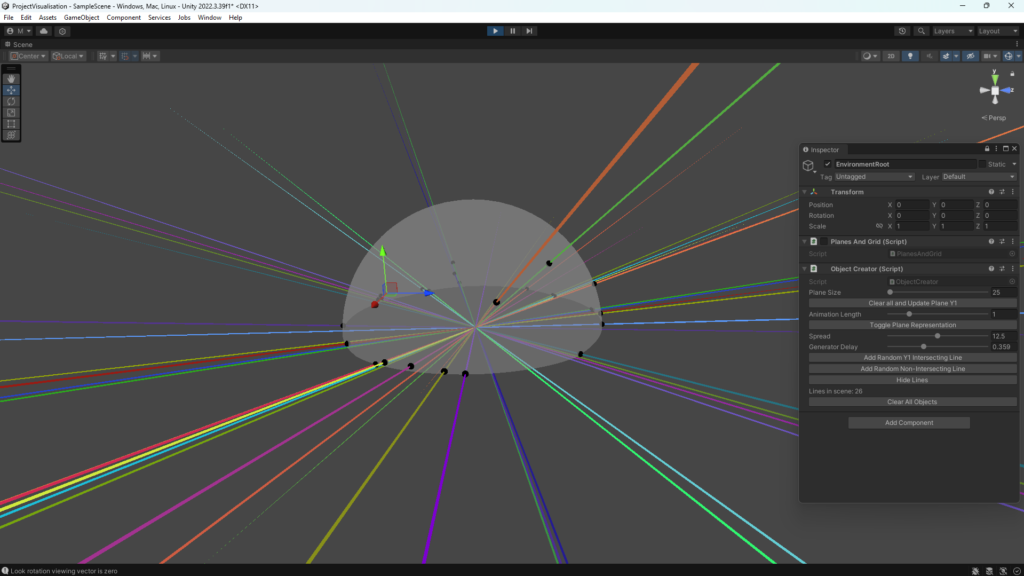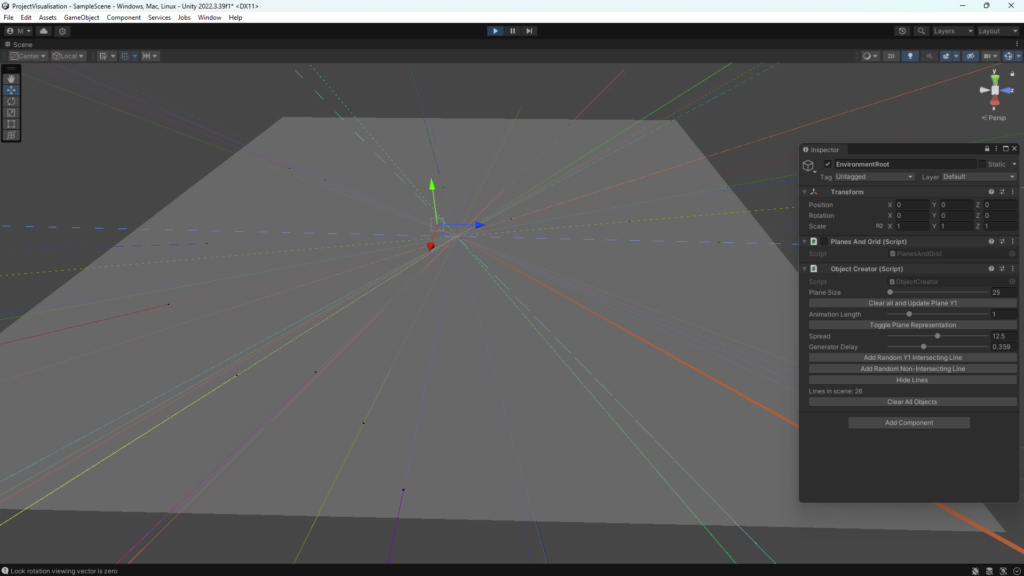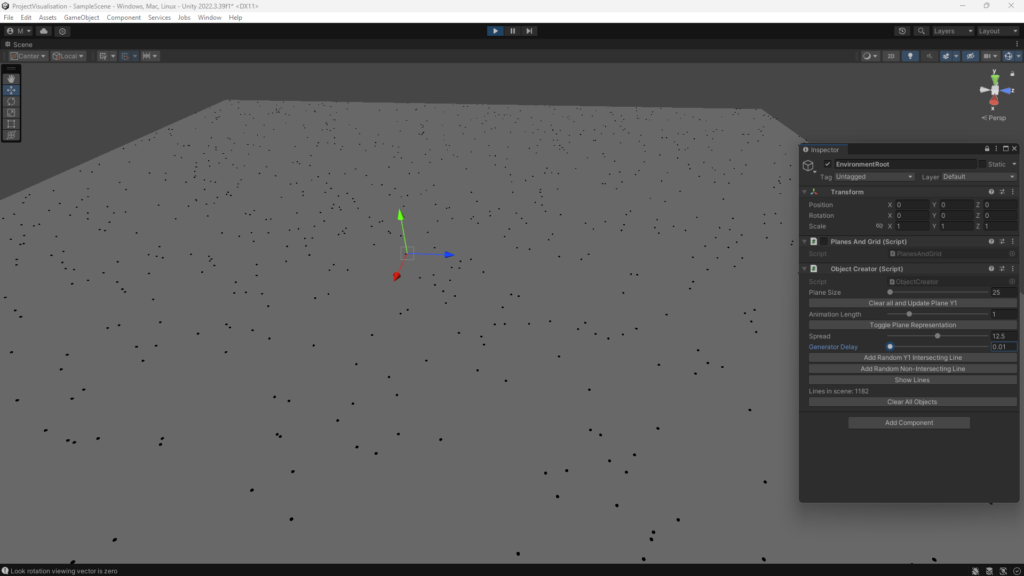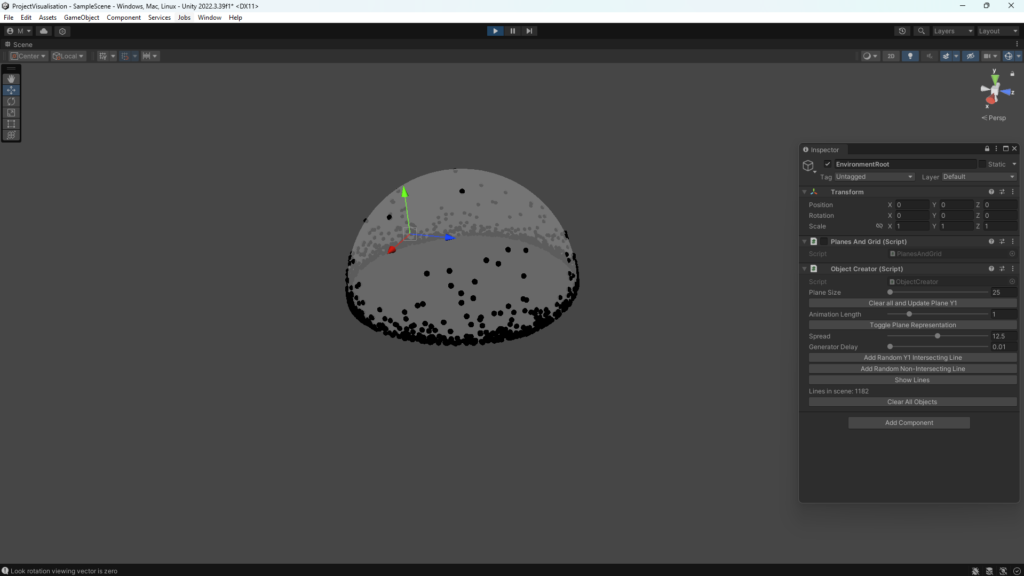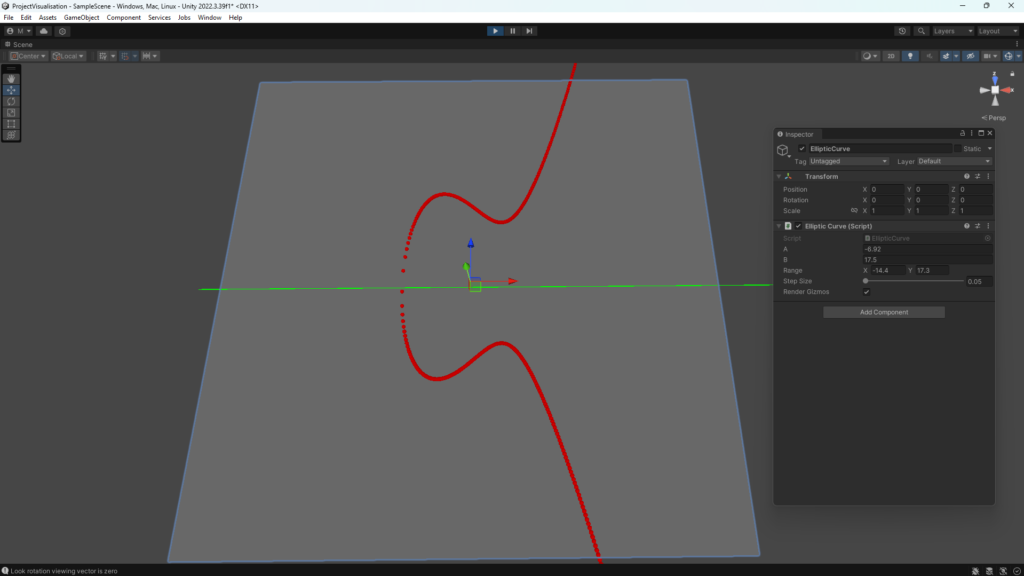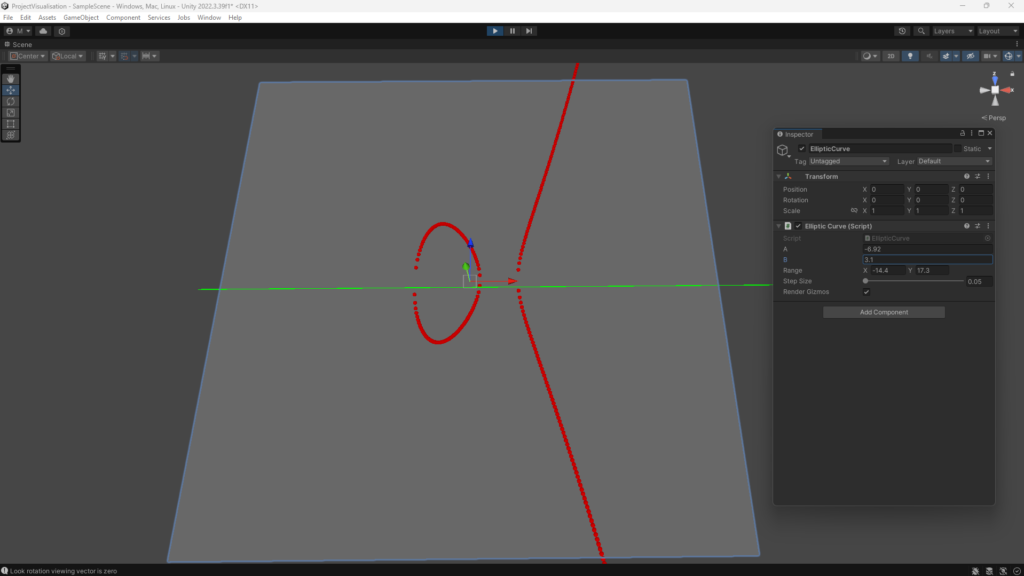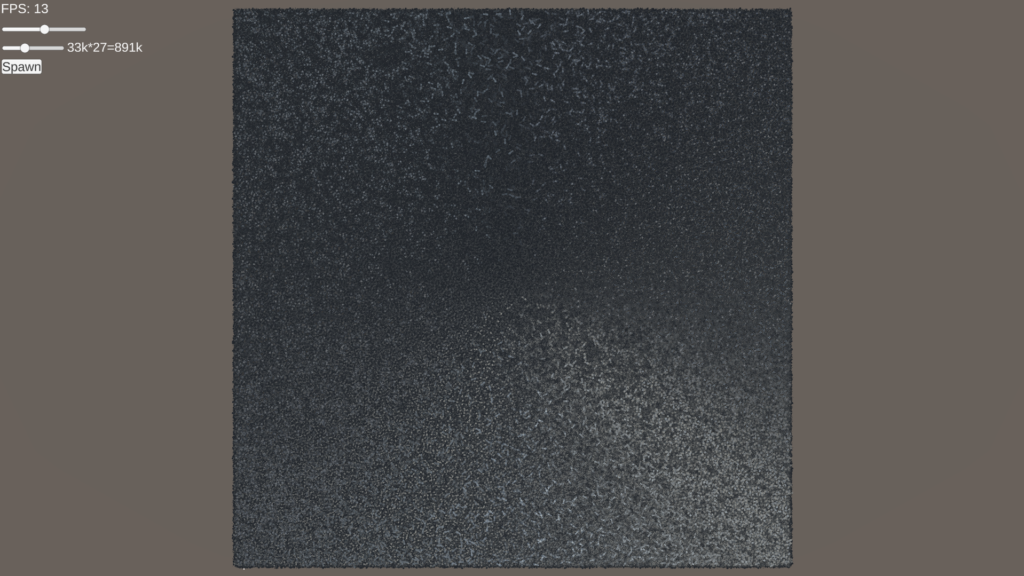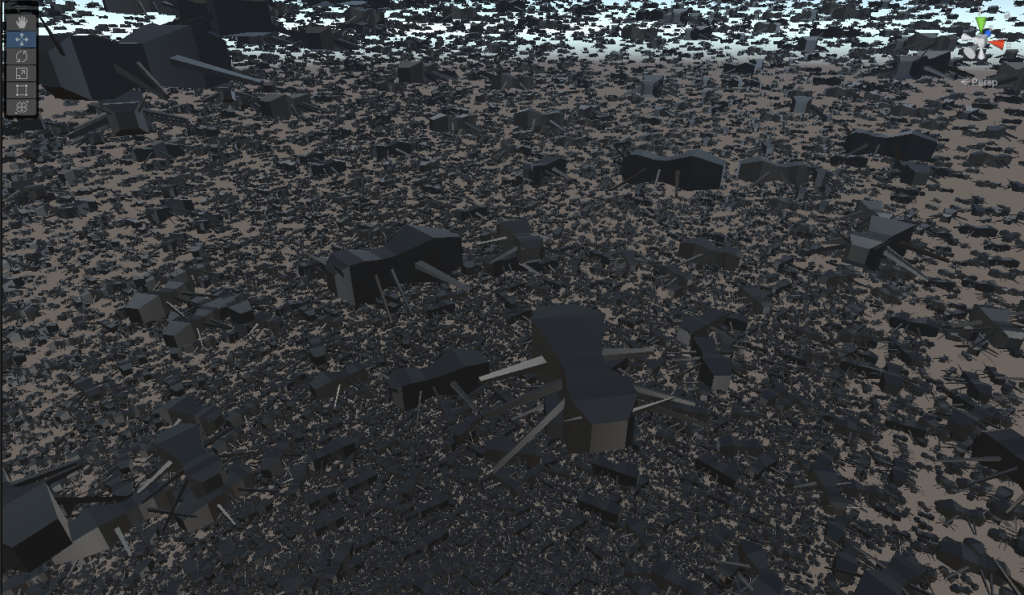In my university module “Higher Mathematics” we learned about projective space and the different representation with the hemisphere. (Or as we lovingly called it: “salad bowl”) This was part of the basics to understand Elliptic-curve cryptography.
Since I had a hard time wrapping my head around the secondary representation of projective space, I decided to create a visualizer in the game engine I was familiar with at the time: Unity3d. I built a very crude module that can creates a 2D plane with a translucent mesh which can morph between the two representations. And I also added the intersecting lines together with the points to visualize where the points are at all times. This helped me understand the topic more deeply and didn’t take too much time to make.
Since it wasn’t planned to be a finished project, it is not really polished, but you can still find the working unity project on the GitHub repository: https://github.com/MisterIXI/projective-space-visualization
